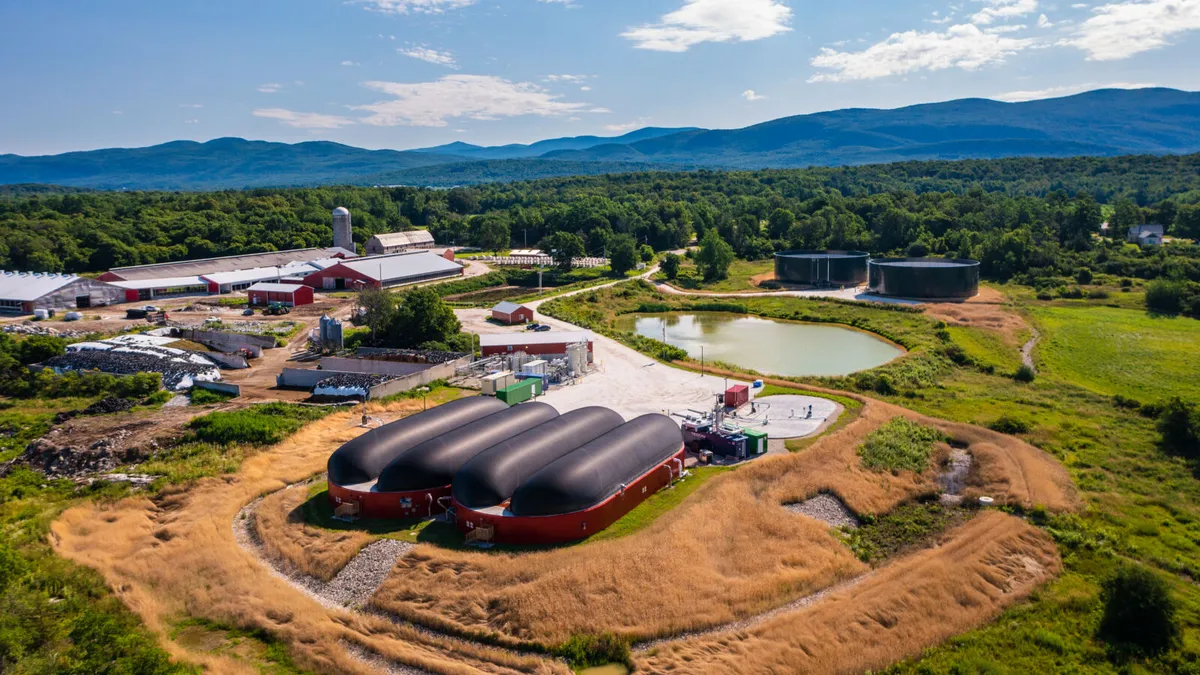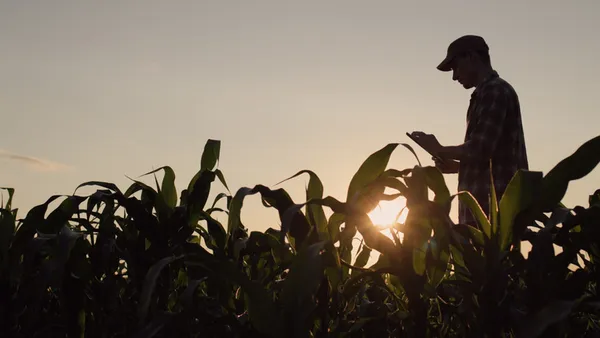Dive Brief:
-
Danone North America said Wednesday it will join other major companies in an effort to transform food waste into renewable energy.
-
The dairy and yogurt maker will participate in the Farm Powered Strategic Alliance, which allows businesses to recycle their inedible food waste into renewable natural gas through farm-based anaerobic digesters.
-
Vanguard Renewables, which owns and operates on-farm anaerobic digester facilities, began the alliance in 2020 along with Starbucks, Unilever and Dairy Farmers of America. The effort is meant to support food waste reduction, renewable energy production and regenerative agriculture practices.
Dive Insight:
The addition of Danone to the alliance comes as Vanguard Renewables, the largest anaerobic digester operator in the U.S., navigates a period of growth and expansion. It was purchased by a fund managed by BlackRock Real Assets last year for approximately $700 million and plans to eventually operate more than 150 sites with biodigesters.
Anaerobic digesters and other methods to turn food into fuel are becoming central to companies' sustainability plans. Danone pledged to reduce its methane emissions 30% by 2030, and expects to hit that goal by scaling its programs and partnering with suppliers that convert manure into fertilizer through composting or biodigesters, according to its annual 2022 report.
Chris Adamo, vice president of public affairs and regenerative agriculture policy at Danone North America, said the company is excited to be a part of the alliance with Vanguard Renewables and other industry leaders as it works toward its overall sustainability goals.
"By working together, we can accelerate the understanding and adoption of sustainable practices, reduce food waste, and contribute to a more circular economy,” Adamo said.
Dairy manure is the nation’s largest source of methane from livestock management systems, and biodigesters play a significant role in reducing emission totals. With more than 200 systems on-site, approximately 4.3 million metric tons of carbon dioxide emissions are captured each year from dairy farms, according to the U.S. Environmental Protection Agency.











